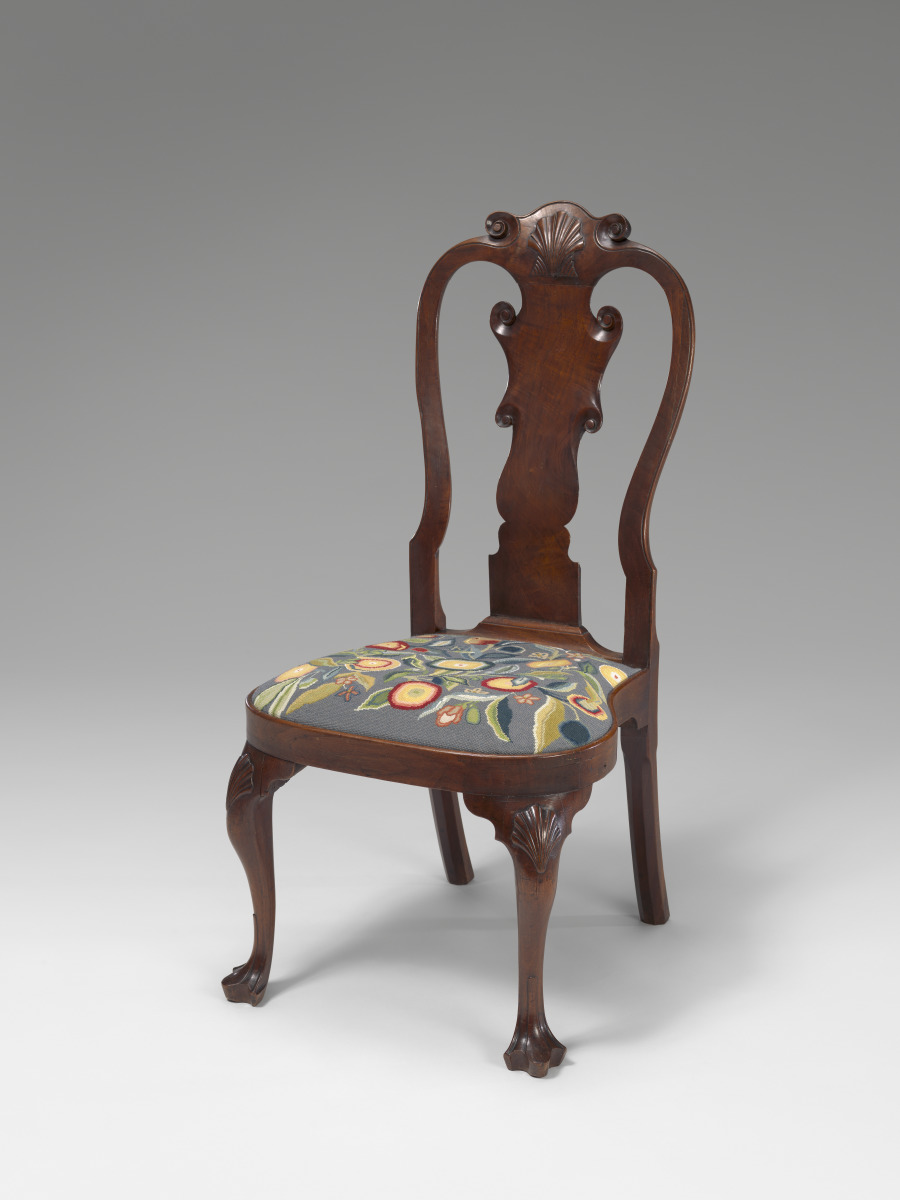
Compass Seat Side Chair (Primary Title)
Unknown (Artist)
This masterful example of late baroque design and craftsmanship displays beautiful proportions, a sculptural use of positive and negative space, and elegantly carved details executed with crisp precision. Its harmonious whole is based on an aesthetic principle first articulated by English painter and engraver William Hogarth, who proclaimed “the line of beauty” to be a flowing S curve. The ideal influenced colonial American furniture production during the rococo period, from about 1750 until the rise of neoclassicism in the 1780s.
This chair was part of a set that furnished Graeme Park, a house located outside Philadelphia. Built in the early 1720s, it was intended as a country residence for the deputy governor, William Keith. In 1739, it was acquired by Dr. Thomas Graeme, husband of Anne Diggs, Keith’s stepdaughter. In 1755, Graeme began an extensive redecorating campaign. This chair probably dates to that refurbishment. An earlier chest owned by the Graeme family is also on display in this gallery.
The needlepoint seat on this chair was reproduced based on a surviving original on another chair from the Graeme Park set, now in the collection of Colonial Williamsburg.
Some object records are not complete and do not reflect VMFA's full and current knowledge. VMFA makes routine updates as records are reviewed and enhanced.

